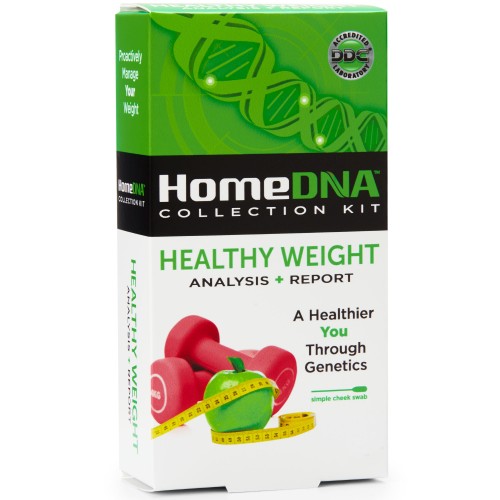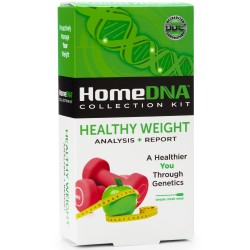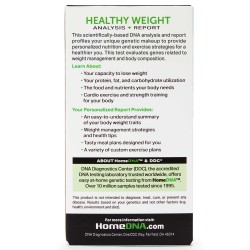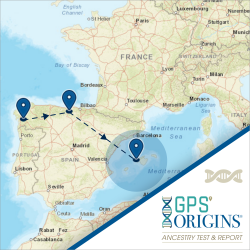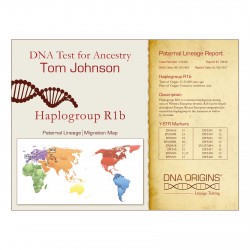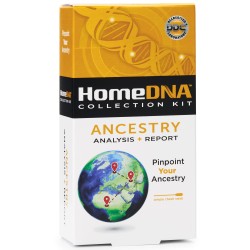Resources
WEIGHT LOSS ABILITY
Hum Hered. 2013;75(2-4):160-74. doi: 10.1159/000353181. Epub 2013 Sep 27.
Human cardiovascular disease IBC chip-wide association with weight loss and weight regain in the look AHEAD trial.
http://www.ncbi.nlm.nih.gov/pubmed/?term=24081232
McCaffery JM, Papandonatos GD, Huggins GS, Peter I, Erar B, Kahn SE, Knowler WC, Lipkin EW, Kitabchi AE, Wagenknecht LE, Wing RR; Genetic Subgroup of Look AHEAD; Look AHEAD Research Group
Diabetes. 2012 Nov;61(11):3005-11. doi: 10.2337/db11-1799. Epub 2012 Aug 13.
FTO genotype and 2-year change in body composition and fat distribution in response to weight-loss diets.
http://www.ncbi.nlm.nih.gov/pubmed/?term=22891219
Zhang X, Qi Q, Zhang C, Smith SR, Hu FB, Sacks FM, Bray GA, Qi L.
Int J Obes (Lond). 2013 Dec;37(12):1545-52. doi: 10.1038/ijo.2013.54. Epub 2013 Apr 3.
FTO predicts weight regain in the Look AHEAD clinical trial.
http://www.ncbi.nlm.nih.gov/pubmed/?term=23628854
McCaffery JM1, Papandonatos GD, Huggins GS, Peter I, Kahn SE, Knowler WC, Hudnall GE, Lipkin EW, Kitabchi AE, Wagenknecht LE, Wing RR; Genetic Subgroup of Look AHEAD; Look AHEAD Research Group
Diabetes. 2010 Mar;59(3):747-50. doi: 10.2337/db09-1050. Epub 2009 Dec 22.
Gene variants of TCF7L2 influence weight loss and body composition during lifestyle intervention in a population at risk for type 2 diabetes.
http://www.ncbi.nlm.nih.gov/pubmed/?term=20028944
Haupt A, Thamer C, Heni M, Ketterer C, Machann J, Schick F, Machicao F, Stefan N, Claussen CD, Häring HU, Fritsche A, Staiger H.
Am J Clin Nutr. 2012 Nov;96(5):1129-36. doi: 10.3945/ajcn.112.038125. Epub 2012 Oct 3.
TCF7L2 genetic variants modulate the effect of dietary fat intake on changes in body composition during a weight-loss intervention
http://www.ncbi.nlm.nih.gov/pubmed/?term=23034957
Mattei J, Qi Q, Hu FB, Sacks FM, Qi L.
Am J Clin Nutr. 2014 Feb;99(2):392-9. doi: 10.3945/ajcn.113.072066. Epub 2013 Dec 11.
Variants in glucose- and circadian rhythm-related genes affect the response of energy expenditure to weight-loss diets
http://www.ncbi.nlm.nih.gov/pubmed/?term=24335056
Mirzaei K, Xu M, Qi Q, de Jonge L, Bray GA, Sacks F, Qi L
Diabetes Care. 2012 Feb;35(2):363-6. doi: 10.2337/dc11-1328. Epub 2011 Dec 16.
Genetic predictors of weight loss and weight regain after intensive lifestyle modification, metformin treatment, or standard care in the Diabetes Prevention Program.
http://www.ncbi.nlm.nih.gov/pubmed/?term=22179955
Delahanty LM, Pan Q, Jablonski KA, Watson KE, McCaffery JM, Shuldiner A, Kahn SE, Knowler WC, Florez JC, Franks PW; Diabetes Prevention Program Research Group.
Diabetes. 2002 Aug;51(8):2581-6.
Association of the Pro12Ala polymorphism in the PPAR-gamma2 gene with 3-year incidence of type 2 diabetes and body weight change in the Finnish Diabetes Prevention Study.
http://www.ncbi.nlm.nih.gov/pubmed/?term=12145174
Lindi VI, Uusitupa MI, Lindström J, Louheranta A, Eriksson JG, Valle TT, Hämäläinen H, Ilanne-Parikka P, Keinänen-Kiukaanniemi S, Laakso M, Tuomilehto J; Finnish Diabetes Prevention Study.
Clin Genet. 2003 Feb;63(2):109-16.
The PPAR-gamma P12A polymorphism modulates the relationship between dietary fat intake and components of the metabolic syndrome.
http://www.ncbi.nlm.nih.gov/pubmed/?term=12145174
Robitaille J, Després JP, Pérusse L, Vohl MC.
Clin Genet. 2003 Feb;63(2):109-16.
Interaction between a peroxisome proliferator-activated receptor gamma gene polymorphism and dietary fat intake in relation to body mass.
http://www.ncbi.nlm.nih.gov/pubmed/?term=14506127
Memisoglu A, Hu FB, Hankinson SE, Manson JE, De Vivo I, Willett WC, Hunter DJ.
FOOD – PROTEIN UTILIZATION
Int J Obes (Lond). 2013 Dec;37(12):1545-52. doi: 10.1038/ijo.2013.54. Epub 2013 Apr 3.
FTO predicts weight regain in the Look AHEAD clinical trial.
http://www.ncbi.nlm.nih.gov/pubmed/?term=23628854
McCaffery JM1, Papandonatos GD, Huggins GS, Peter I, Kahn SE, Knowler WC, Hudnall GE, Lipkin EW, Kitabchi AE, Wagenknecht LE, Wing RR; Genetic Subgroup of Look AHEAD; Look AHEAD Research Group.
FOOD – FAT UTILIZATION
Diabetes Care. 2012 Feb;35(2):363-6. doi: 10.2337/dc11-1328. Epub 2011 Dec 16.
Genetic predictors of weight loss and weight regain after intensive lifestyle modification, metformin treatment, or standard care in the Diabetes Prevention Program.
http://www.ncbi.nlm.nih.gov/pubmed/?term=23628854
Delahanty LM, Pan Q, Jablonski KA, Watson KE, McCaffery JM, Shuldiner A, Kahn SE, Knowler WC, Florez JC, Franks PW; Diabetes Prevention Program Research Group.
Diabetes. 2002 Aug;51(8):2581-6.
Association of the Pro12Ala polymorphism in the PPAR-gamma2 gene with 3-year incidence of type 2 diabetes and body weight change in the Finnish Diabetes Prevention Study.
http://www.ncbi.nlm.nih.gov/pubmed/?term=12145174
Lindi VI, Uusitupa MI, Lindström J, Louheranta A, Eriksson JG, Valle TT, Hämäläinen H, Ilanne-Parikka P, Keinänen-Kiukaanniemi S, Laakso M, Tuomilehto J; Finnish Diabetes Prevention Study
Clin Genet. 2003 Feb;63(2):109-16.
The PPAR-gamma P12A polymorphism modulates the relationship between dietary fat intake and components of the metabolic syndrome.
http://www.ncbi.nlm.nih.gov/pubmed/?term=12630956
Robitaille J, Després JP, Pérusse L, Vohl MC.
Hum Mol Genet. 2003 Nov 15;12(22):2923-9. Epub 2003 Sep 23.
Interaction between a peroxisome proliferator-activated receptor gamma gene polymorphism and dietary fat intake in relation to body mass.
http://www.ncbi.nlm.nih.gov/pubmed/?term=14506127
Memisoglu A, Hu FB, Hankinson SE, Manson JE, De Vivo I, Willett WC, Hunter DJ.
Am J Clin Nutr. 2012 Nov;96(5):1129-36. doi: 10.3945/ajcn.112.038125. Epub 2012 Oct 3.
TCF7L2 genetic variants modulate the effect of dietary fat intake on changes in body composition during a weight-loss intervention.
http://www.ncbi.nlm.nih.gov/pubmed/?term=2303495
Mattei J, Qi Q, Hu FB, Sacks FM, Qi L.
Circulation. 2006 May 2;113(17):2062-70. Epub 2006 Apr 24.
Dietary intake of n-6 fatty acids modulates effect of apolipoprotein A5 gene on plasma fasting triglycerides, remnant lipoprotein concentrations, and lipoprotein particle size: the Framingham Heart Study.
http://www.ncbi.nlm.nih.gov/pubmed/?term=16636175
Lai CQ, Corella D, Demissie S, Cupples LA, Adiconis X, Zhu Y, Parnell LD, Tucker KL, Ordovas JM.
Clin Genet. 2005 Aug;68(2):152-4.
A polymorphism in the apolipoprotein A5 gene is associated with weight loss after short-term diet.
http://www.ncbi.nlm.nih.gov/pubmed/?term=15996212
Aberle J, Evans D, Beil FU, Seedorf U.
J Mol Med (Berl). 2007 Feb;85(2):119-28. Epub 2007 Jan 9.
APOA5 gene variation modulates the effects of dietary fat intake on body mass index and obesity risk in the Framingham Heart Study.
http://www.ncbi.nlm.nih.gov/pubmed/?term=17211608
Corella D, Lai CQ, Demissie S, Cupples LA, Manning AK, Tucker KL, Ordovas JM.
J Nutr. 2011 Mar;141(3):380-5. doi: 10.3945/jn.110.130344. Epub 2011 Jan 5.
APOA5 gene variation interacts with dietary fat intake to modulate obesity and circulating triglycerides in a Mediterranean population.
http://www.ncbi.nlm.nih.gov/pubmed/?term=21209257
Sánchez-Moreno C, Ordovás JM, Smith CE, Baraza JC, Lee YC, Garaulet M.
Circulation. 2013 Mar 26;127(12):1283-9. doi: 10.1161/CIRCULATIONAHA.112.000586. Epub 2013 Feb 27.
Variants in glucose- and circadian rhythm-r elated genes affect the response of energy expenditure to weight-loss diets: the POUNDS LOST Trial.
http://www.ncbi.nlm.nih.gov/pubmed/?term=24335056
Mirzaei K, Xu M, Qi Q, de Jonge L, Bray GA, Sacks F, Qi L.
Am J Clin Nutr. 2014 Feb;99(2):392-9. doi: 10.3945/ajcn.113.072066. Epub 2013 Dec 11.
Genetic determinant for amino acid metabolites and changes in body weight and insulin resistance in response to weight-loss diets: the Preventing Overweight Using Novel Dietary Strategies (POUNDS LOST trial.
http://www.ncbi.nlm.nih.gov/pubmed/?term=23446828
Xu M, Qi Q, Liang J, Bray GA, Hu FB, Sacks FM, Qi L.
FOOD - CARB UTILIZATION
Circulation. 2011 Aug 2;124(5):563-71. doi: 10.1161/CIRCULATIONAHA.111.025767. Epub 2011 Jul 11.
Insulin receptor substrate 1 gene variation modifies insulin resistance response to weight-loss diets in a 2-year randomized trial.
http://www.ncbi.nlm.nih.gov/pubmed/?term=21747052
Qi Q, Bray GA, Smith SR, Hu FB, Sacks FM, Qi L.
NUTRIENTS - VITAMIN B9 - FOLATE TENDENCY
Proc Nutr Soc. 2014 Feb;73(1):47-56. doi: 10.1017/S0029665113003613. Epub 2013 Oct 17.
MTHFR 677TT genotype and disease risk: is there a modulating role for B-vitamins?
http://www.ncbi.nlm.nih.gov/pubmed/?term=24131523
Reilly R, McNulty H1, Pentieva K, Strain JJ, Ward M.
NUTRIENTS - VITAMIN A TENDENCY
FASEB J. 2009 Apr;23(4):1041-53. doi: 10.1096/fj.08-121962. Epub 2008 Dec 22.
Two common single nucleotide polymorphisms in the gene encoding beta-carotene 15,15’-monoxygenase alter beta-carotene metabolism in female volunteers.
http://www.ncbi.nlm.nih.gov/pubmed/?term=19103647
Leung WC, Hessel S, Méplan C, Flint J, Oberhauser V, Tourniaire F, Hesketh JE, von Lintig J, Lietz G.
NUTRIENTS - VITAMIN B6TENDENCY
Am J Hum Genet. 2009 Apr;84(4):477-82. doi: 10.1016/j.ajhg.2009.02.011. Epub 2009 Mar 19.
Genome-wide association study of vitamin B6, vitamin B12, folate, and homocysteine blood concentrations.
http://www.ncbi.nlm.nih.gov/pubmed/?term=19303062
Tanaka T, Scheet P, Giusti B, Bandinelli S, Piras MG, Usala G, Lai S, Mulas A, Corsi AM, Vestrini A, So i F, Gori AM, Abbate R, Guralnik J, Singleton A, Abecasis GR, Schlessinger D, Uda M, Ferrucci L.
NUTRIENTS - VITAMIN B12TENDENCY
Nat Genet. 2008 Oct;40(10):1160-2. doi: 10.1038/ng.210. Epub 2008 Sep 7.
Common variants of FUT2 are associated with plasma vitamin B12 levels.
http://www.ncbi.nlm.nih.gov/pubmed/?term=18776911
Hazra A, Kraft P, Selhub J, Giovannucci EL, Thomas G, Hoover RN, Chanock SJ, Hunter DJ.
Am J Hum Genet. 2009 Apr;84(4):477-82. doi: 10.1016/j.ajhg.2009.02.011. Epub 2009 Mar 19.
Genome-wide association study of vitamin B6, vitamin B12, folate, and homocysteine blood concentrations.
http://www.ncbi.nlm.nih.gov/pubmed/?term=19303062
Tanaka T, Scheet P, Giusti B, Bandinelli S, Piras MG, Usala G, Lai S, Mulas A, Corsi AM, Vestrini A, So i F, Gori AM, Abbate R, Guralnik J, Singleton A, Abecasis GR, Schlessinger D, Uda M, Ferrucci L.
NUTRIENTS - VITAMIN C TENDENCY
Am J Clin Nutr. 2010 Aug;92(2):375-82. doi: 10.3945/ajcn.2010.29438. Epub 2010 Jun 2.
Genetic variation at the SLC23A1 locus is associated with circulating concentrations of L-ascorbic acid (vitamin C : evidence from 5 independent studies with >15,000 participants.
http://www.ncbi.nlm.nih.gov/pubmed/?term=20519558
Timpson NJ, Forouhi NG, Brion MJ, Harbord RM, Cook DG, Johnson P, McConnachie A, Morris RW, Rodriguez S, Luan J, Ebrahim S, Padmanabhan S, Watt G, Bruckdorfer KR, Wareham NJ, Whincup PH, Chanock S, Sattar N, Lawlor DA, Davey Smith G.
NUTRIENTS - VITAMIN D TENDENCY
Lancet. 2010 Jul 17;376(9736):180-8. doi: 10.1016/S0140-6736(10)60588-0. Epub 2010 Jun 10.
Common genetic determinants of vitamin D insufficiency: a genome-wide association study.
http://www.ncbi.nlm.nih.gov/pubmed/?term=20541252
Wang TJ, Zhang F, Richards JB, Kestenbaum B, van Meurs JB, Berry D, Kiel DP, Streeten EA, Ohlsson C, Koller DL, Peltonen L,Cooper JD, O’Reilly PF, Houston DK, Glazer NL, Vandenput L, Peacock M, Shi J, Rivadeneira F, McCarthy MI, Anneli P, de Boer IH,Mangino M, Kato B, Smyth DJ, Booth SL, Jacques PF, Burke GL, Goodarzi M, Cheung CL, Wolf M, Rice K, Goltzman D, Hidiroglou N, Ladouceur M, Wareham NJ, Hocking LJ, Hart D, Arden NK, Cooper C, Malik S, Fraser WD, Hartikainen AL, Zhai G, Macdonald HM, Forouhi NG, Loos RJ, Reid DM, Hakim A, Dennison E, Liu Y, Power C, Stevens HE, Jaana L, Vasan RS, Soranzo N, Bojunga J,Psaty BM, Lorentzon M, Foroud T, Harris TB, Hofman A, Jansson JO, Cauley JA, Uitterlinden AG, Gibson Q, Järvelin MR, Karasik D,
Siscovick DS, Econs MJ, Kritchevsky SB, Florez JC, Todd JA, Dupuis J, Hyppönen E, Spector TD.
EXERCISE - FAT RESPONSE TO CARDIO
J Appl Physiol (1985). 2001 Sep;91(3):1334-40.
Evidence of LPL gene-exercise interaction for body fat and LPL activity : the HERITAGE Family Study.
http://www.ncbi.nlm.nih.gov/pubmed/11509533
Garenc C, Pérusse L, Bergeron J, Gagnon J, Chagnon YC, Borecki IB, Leon AS, Skinner JS, Wilmore JH, Rao DC, Bouchard C.
Obes Res. 2003 May;11(5):612-8.
Effects of beta2-adrenergic receptor gene variants on adiposity: the HERITAGE Family Study.
http://www.ncbi.nlm.nih.gov/pubmed/12740450
Garenc C, Pérusse L, Chagnon YC, Rankinen T, Gagnon J, Borecki IB, Leon AS, Skinner JS, Wilmore JH, Rao DC, Bouchard C; HERITAGE Family Study
EXERCISE - FITNESS RESPONSE TO CARDIO
Physiol Genomics. 2003 Jul 7;14(2):161-6.
Associations between cardiorespiratory responses to exercise and the C34T AMPD1 gene polymorphism in the HERITAGE Family Study.
http://www.ncbi.nlm.nih.gov/pubmed/12783984
Rico-Sanz J, Rankinen T, Joanisse DR, Leon AS, Skinner JS, Wilmore JH, Rao DC, Bouchard C; HERITAGE Family study.
Metabolism. 2004 Feb;53(2):193-202.
Apolipoprotein E genotype and changes in serum lipids and maximal oxygen uptake with exercise training.
http://www.ncbi.nlm.nih.gov/pubmed/14767871
Thompson PD, Tsongalis GJ, Seip RL, Bilbie C, Miles M, Zoeller R, Visich P, Gordon P, Angelopoulos TJ, Pescatello L, Bausserman L, Moyna N.
Metabolism. 2004 Jan;53(1):108-16.
Association of apolipoprotein E polymorphism with blood lipids and maximal oxygen uptake in the sedentary state and after exercise training in the HERITAGE family study.
http://www.ncbi.nlm.nih.gov/pubmed/14681851
Leon AS, Togashi K, Rankinen T, Després JP, Rao DC, Skinner JS, Wilmore JH, Bouchard C
EXERCISE - BODY COMPOSITION RESPONSE TO STRENGTH TRAINING
International Journal of Obesity (2015) 39, 1371–1375; doi:10.1038/ijo.2015.78; published online 26 May 2015
High genetic risk individuals benefit less from resistance exercise intervention
http://www.nature.com/ijo/journal/v39/n9/abs/ijo201578a.html
Y C Klimentidis, J W Bea, T Lohman, P-S Hsieh, S Going and Z Chen
EXERCISE - HDL RESPONSE TO CARDIO
Metabolism. 2004 Jan;53(1):108-16.
Association of apolipoprotein E polymorphism with blood lipids and maximal oxygen uptake in the sedentary state and after exercise training in the HERITAGE family study.
http://www.ncbi.nlm.nih.gov/pubmed/14681851
Leon AS, Togashi K, Rankinen T, Després JP, Rao DC, Skinner JS, Wilmore JH, Bouchard C.
EXERCISE - INSULIN SENSITIVITY RESPONSE TO CARDIO
Am J Physiol Endocrinol Metab. 2005 Jun;288(6):E1168-78. Epub 2005 Feb 1.
Endurance training-induced changes in insulin sensitivity and gene expression.
http://www.ncbi.nlm.nih.gov/pubmed/15687108
Teran-Garcia M, Rankinen T, Koza RA, Rao DC, Bouchard C.
Diabetes. 2005 Jul;54(7):2251-5.
Hepatic lipase gene variant -514C>T is associated with lipoprotein and insulin sensitivity response to regular exercise: the HERITAGE Family Study.
http://www.ncbi.nlm.nih.gov/pubmed/15983229
Teran-Garcia M, Santoro N, Rankinen T, Bergeron J, Rice T, Leon AS, Rao DC, Skinner JS, Bergman RN, Després JP, Bouchard C; HERITAGE Family Study.
EXERCISE - GLUCOSE RESPONSE TO CARDIO
Am J Physiol Endocrinol Metab. 2005 Jun;288(6):E1168-78. Epub 2005 Feb 1.
Influence of Pro12Ala peroxisome proliferator-activated receptor gamma2 polymorphism on glucose response to exercise training in type 2 diabetes.
http://www.ncbi.nlm.nih.gov/pubmed/15986237
Adamo KB, Sigal RJ, Williams K, Kenny G, Prud’homme D, Tesson F.
Diabetologia. 2010 Apr;53(4):679-89. doi: 10.1007/s00125-009-1630-2. Epub 2009 Dec 31.
Improvements in glucose homeostasis in response to regular exercise are influenced by the PPARG Pro12Ala variant: results from the HERITAGE Family Study.
http://www.ncbi.nlm.nih.gov/pubmed/20043145
Ruchat SM, Rankinen T, Weisnagel SJ, Rice T, Rao DC, Bergman RN, Bouchard C, Pérusse L.
Metabolism. 2003 Feb;52(2):209-12.
PPARgamma gene polymorphism is associated with exercise-mediated changes of insulin resistance in healthy men.
http://www.ncbi.nlm.nih.gov/pubmed/12601634
Kahara T, Takamura T, Hayakawa T, Nagai Y, Yamaguchi H, Katsuki T, Katsuki K, Katsuki M, Kobayashi K.
